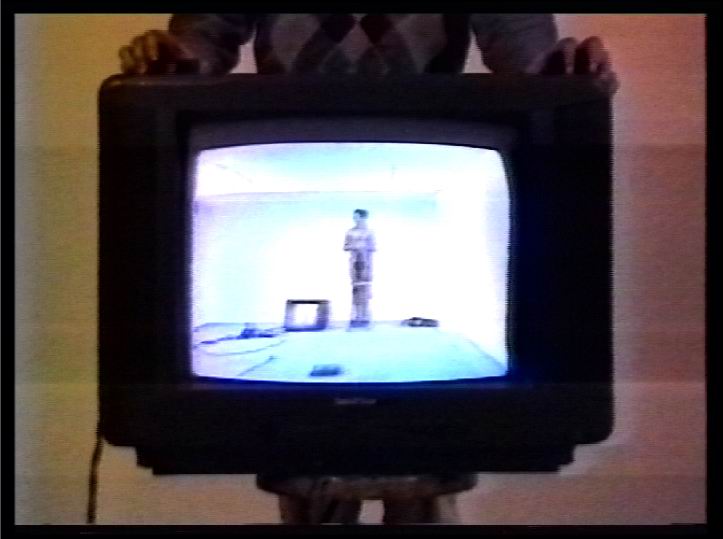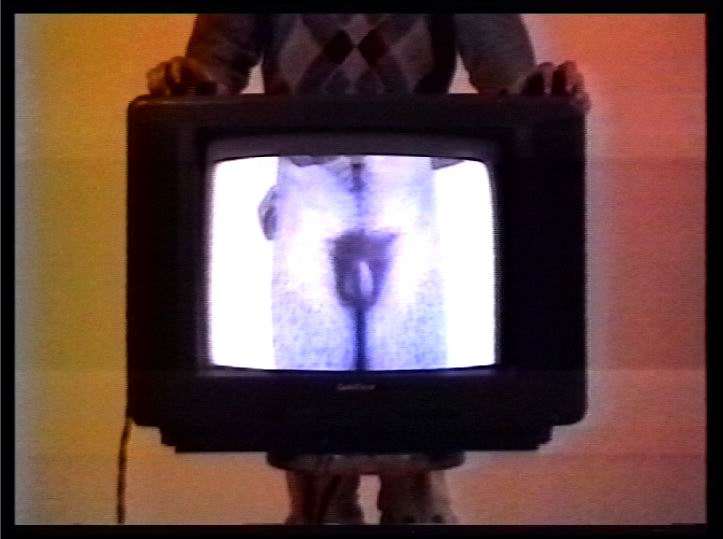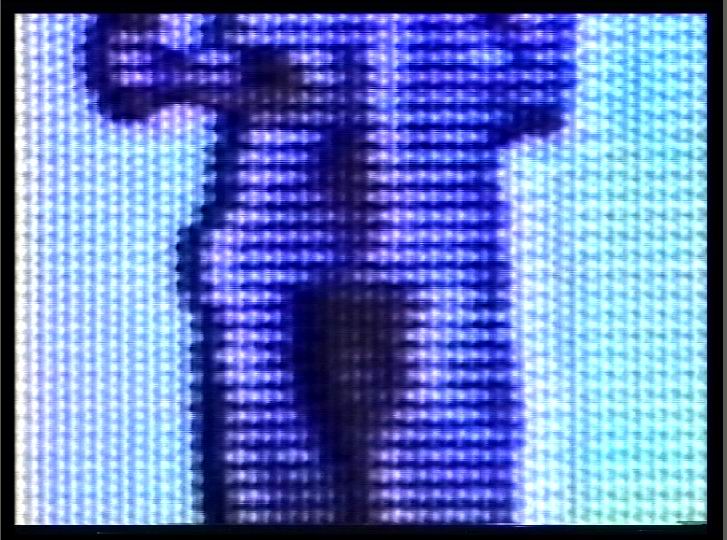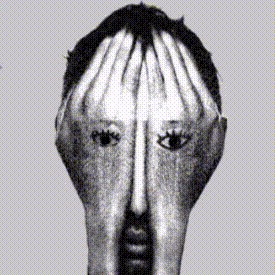Kiran Subbaiah / Texts about KS / Kirralee Robinson: Strip Tease
India: a country whose identity is so richly based in iconography, colours, the arts, rituals and it's own traditions. The reliance on these things for identity somewhat falls into the background when the artworks by Kiran Subbiah are considered. Subbaiah's works are unique and contextually unusual. The influences for his works have not come from deep art history, nor have strong influences from Indian culture appeared in his works. Subbaiah's inspiration seems to come from his passion for art itself and the subsequent exploration and experimentation with forms, ideas and media. His video piece entitled 'Strip Tease' (1999) definitely supports this notion.Subbaiah began his practice in sculpture and although 'the art object' was an effective way of communicating, he soon began to seek new things. Running out of physical room and energy with his sculptures, Subbaiah discovered video as an easier and more effective medium. All of Subbaiah's works; the sculptures, the texts, the drawings have a playful and experimental theme running through them. This not only reflects Subbaiah's own style, but also his view on the Visual Arts. Subbaiah obviously believes that art should be entertaining and light-hearted as many of his works, including his sculptures, are themselves paradoxes or references to 'the ironic'. As is so cleverly written, "…His irreverence is apparent in the objects, sculptural assemblages and installations he creates, loaded with humour, irony or enigma or rejoicing in their obvious self-contained contradictions." (2003) Subbaiah does not see the need for art to always mean something and his works are often cyclical. Take for example the text called 'A Good Idea'. At first the words seem like they will lead to something (and something good at that), however, when you reach the end of the text, the words lead you back to the beginning. This work then in a way cancels itself out. His video pieces are also similar in that they leave the audience with a sense of ambiguity as to what the 'meaning' is. Subbaiah participates in most of his video works simply because he enjoys it. Subbaiah comments, "Doing things physically, that’s what I like best". (2003) By doing this he creates meaning into the ideas of 'the self' and it personalises his works by not referring to anyone else. This is another way that Subbaiah's works are cyclical. The video art piece by Subbaiah entitled 'Strip Tease' is a short clip encapsulating many ideas, techniques and themes. It is apparent from this video that Subbaiah was still using video as an experimental medium when it was made, in 1999. Although the overall technical quality of 'Strip Tease' is not great, Subbaiah still manages to communicate his ideas effectively. The monochrome colour scheme minimalises the piece, reducing it back to movements, spaces and shapes, while the lack of sound focuses the audience to the action on screen. This work can be divided into two parts. The first is the three bodies seen moving, smoking and drinking around in apparently different spaces. The white screen firstly divides the space into two then when the screen is ripped, a third space is created. The camera appears to go through into this third space, where a sequence with a naked man is the focus. The camera zooms in close to the anatomy of the man and then that whole frame zooms out until you can see the screen itself.



Essentially 'Strip Tease' is about perspective. Subbaiah creates an understanding in the viewer's mind about the 'space' within the screen and then destroys this through creating another illusional space. This can be seen in the first part of the video and more subtly in the second part with the zooming out shots of the 'layered' screens. There is loaded meaning in the screen that divides the 'spaces'. The ripping of the screen could allude to the 'stripping' back (of clothes / attitudes) until only the naked body remains. The screen is also white, which could have some racial implications. The aesthetics of Subbaiah's works are deeply rooted in Surrealism. This is probably an influence he gained from studying in England. Subbaiah takes a representational illusion and makes it appear more real by acting it out and documenting it as a physical reality. The video artist Joan Jonas has directly influenced Kiran Subbaiah. The main influence can be seen in the way that they both bring the viewer's attention to the surface of the screen. In Jonas' piece entitled 'Disturbances' (1974) a hand is seen to appear from in front of the screen and over the surface of the first screen. Here Jonas is bringing in a disorientation of space, similar to 'Strip Tease'. The formal qualities are also similar; the static camera, the monochrome colour scheme and also the figures that are more silhouettes than realistic people. The icon of a naked man can represent a kind of vulnerability, but in 'Strip Tease' he is standing tall, showing no weakness at all. He appears comfortable while the camera zooms in on his genitals. This could be another part in the notion of the self and how we see ourselves and how the camera sees us on the screen. Illusionary space techniques have become somewhat of a trademark for Subbaiah now, with 'Flight Rehearsals', (2004) formally being quite similar to 'Strip Tease' but with the added humour of a clever narrative. Critic Dan Edwards comments on 'Flight Rehearsals', "It's difficult to convey in words the clever distortion of our sense of space." This can also be said about 'Strip Tease'. Upon the first view of this piece, the audience is surprised to see that the space they thought was real was in fact an illusion. This does not happen in secular, everyday TV or movies in any country. In this way Subbaiah changes his audiences' view of what they see on the screen and, more generally, how they see the screen itself. Generally 'Strip Tease' is a dis-jointed work, which makes it difficult to investigate beyond calling it experimentation. However it is possible that this was the intent in the piece. When his other works are considered they leave his audiences / viewers with nothing more than what they came in with. Occasionally they may be given something funny, but Subbaiah's works basically just draw attention to, and circulate around, themselves and this can be said for 'Strip Tease'. There is no sound or narrative in this work, which indicates that the visual effects are of most importance and the visual effects can be confusing. The disjointed nature also means this piece does not flow like a film might, again making any deeper conclusions difficult to make. 'Strip Tease' is evidence that Subbaiah's video works are an extension of the art object, as opposed to may other artists from India whose art mainly deals with or displays traditions from that culture. His works do not rely upon any prior knowledge of art history or anything from the Indian culture for understanding. By doing this he enables a wider audience to appreciate his ideas. Subbaiah circulates around everyday themes such as gravity, space, ironies and humour which makes all of his works, including 'Strip Tease' easy to view.
Kiralee Robinson
Bibliography
Kiran Subbaiah / Texts about KS / Kirralee Robinson: Strip Tease |

|